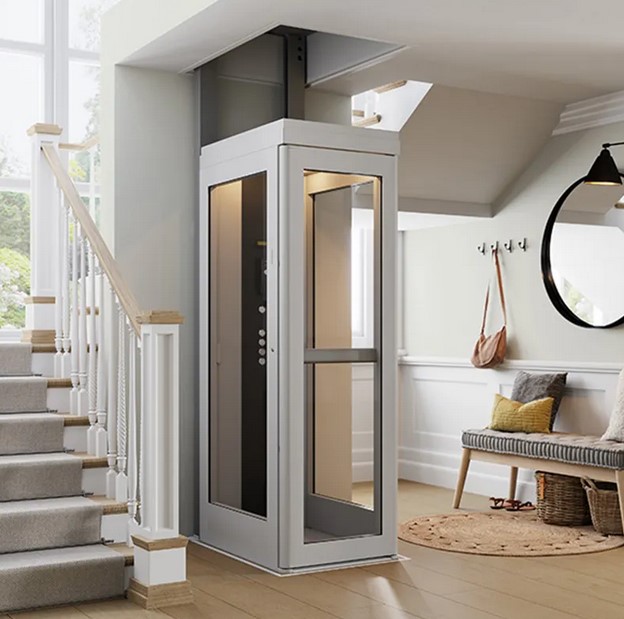We Maintain Lifts to the Highest Possible Specifications: Reliable Solution for All Lift Types
We Maintain Lifts to the Highest Possible Specifications: Reliable Solution for All Lift Types
Blog Article
Digging Into the Globe of Elevators: Typical Problems Dealt With by Various Lift Devices
As we browse via the vertical transportation systems of contemporary buildings, elevators stand out as an indispensable element of our everyday lives. From hydraulic lifts to traction systems and machine-room-less styles, each lift type comes with its set of usual issues.
Hydraulic Elevators
Hydraulic elevators, usually chosen for low-rise buildings, utilize fluid stress to manage the movement of the elevator auto (lift repair companies). This system includes a hydraulic pump pushing oil right into a cyndrical tube, creating the elevator to relocate the preferred direction. While hydraulic lifts are known for their smooth and quiet procedure, they do include their own set of usual concerns
One widespread trouble with hydraulic lifts is oil leak. The seals in the hydraulic system can wear over time, causing oil infiltration. If left unaddressed, this not just develops a mess yet can additionally impact the lift's efficiency. Furthermore, concerns with the control system, such as malfunctioning valves or a malfunctioning pump, can cause disturbances in the lift's movement.
Routine maintenance and timely repair services are important to ensure the smooth performance of hydraulic lifts. By addressing these typical problems proactively, building proprietors can minimize downtime and make certain the security and effectiveness of their vertical transport system.
Traction Elevators
When taking into consideration vertical transportation systems in structures, an additional common type besides hydraulic elevators is the traction elevator. Grip elevators run utilizing a system of ropes and weights that move the elevator vehicle by grasping onto the hoist ropes. This system permits smoother and faster vertical transport contrasted to hydraulic systems.
One of the typical concerns faced by grip lifts is rope wear. The consistent motion of the ropes within the grip system can result in tear and use over time, possibly triggering the elevator to breakdown or come to be unsafe for use. Routine assessments and upkeep of the ropes are necessary to ensure the lift's appropriate functioning and safety and security.
Another problem that grip lifts might run into is connected to the control system. Problems with the control system can cause concerns such as irregular movement, delays in reaction times, or perhaps total closures. Normal screening and maintenance of the control system are crucial to avoid such concerns and make certain the lift's integrity.
Machine-Room-Less (MRL) Elevators

Among the vital parts of MRL lifts is the small gearless traction equipment that is installed within the hoistway. This device efficiently drives the elevator cars and truck without the need for large equipment found in traditional traction lifts. Additionally, MRL elevators commonly utilize a weight system to stabilize the car, more improving their power effectiveness.
Regardless of their advantages, MRL elevators may deal with difficulties connected to repair and maintenance due to the constrained space for devices installation. Ease of access for servicing parts within the shaft can be limited, requiring specialized training for professionals. Proper upkeep routines and routine evaluations are important to guarantee the continued smooth procedure of MRL lifts.
Overloading and Weight Limit Issues
Overloading and weight limit concerns are essential worries in lift operations. Lift makers design raises with certain lift repair near me weight capabilities to ensure guest safety and devices longevity.
When elevators are overwhelmed, it puts excessive strain on the motor, cables, and various other elements, possibly causing break downs or malfunctions. If they identify excess weight, safety and security mechanisms such as sensing units and overload sensing units are in area to prevent elevators from moving. Furthermore, exceeding weight restrictions can lead to raised power usage and damage on the lift system.
To reduce straining concerns, developing managers should plainly present weight limitations in elevators and inform owners on the importance of sticking to these limitations - lift repair companies. Normal upkeep checks by certified professionals can additionally help make certain that lifts are operating within secure weight specifications. By dealing with overloading and weight limit concerns proactively, structure owners can improve lift safety and security and performance
Electric System Failings
Going beyond weight limits in elevators can not just cause mechanical problems but additionally potentially add to electric system failures within the lift london lift company facilities. Electric system failures are an essential issue in elevator procedure, as they can create unexpected closures, breakdowns, or even security risks. One usual electrical concern is the getting too hot of components due to extreme present circulation triggered by straining the lift past its capability. This can lead to damage to the electric motor, electrical wiring, or control systems, resulting in expensive repair work and downtime.
Furthermore, power rises or changes in the electric supply can additionally disrupt the lift's operation, affecting its efficiency and safety and security. These electrical disruptions can harm delicate lift parts such as control panels, circuit boards, or sensing units, leading to system failings. Normal upkeep and assessments are essential to determine and deal with potential electrical problems without delay, making sure the safe and reliable procedure of elevator systems. By adhering to weight limits and performing regular electric system checks, building proprietors can reduce the threat of electrical failures in lifts.
Conclusion

Hydraulic elevators, frequently liked for low-rise structures, use fluid pressure to manage the activity of the lift cars and truck.When thinking about upright transport systems in buildings, one more typical type aside from hydraulic elevators is the grip elevator. Grip elevators operate using a system of ropes and weights that relocate the elevator vehicle by grasping onto the hoist ropes. Unlike typical elevators that require a separate machine area to house the equipment, MRL lifts integrate most of the components within the shaft, getting rid of the demand for a committed device space.In final thought, lifts face typical issues such as hydraulic malfunctions, traction system failings, and electric system issues.
Report this page